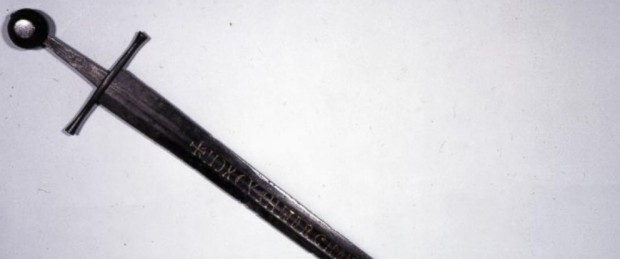
What does +NDXOXCHWDRGHDXORVI+ mean?
That’s what historians at the British Museum are trying to find out.
A steel sword dating back to medieval times has those letters inscribed on its side in gold wire and nobody has been able to decipher it since the sword was found in July 1825, according to the museum, which loaned the artifact to the British Library recently for its Magna Carta commemoration.
Since the library opened up the public comments section on Aug. 3 on a blog post about the sword, suggestions have poured in.
The 38-inch long sword weighs in at two pounds 10 ounces and was probably owned by a wealthy individual, museum officials said. The likely German-manufactured blade is thin, yet strong, and “if struck with sufficient force, it could easily have sliced a man’s head in two,” according to the museum.
As for the mystery inscription, the museum highlighted one leading theory from Marc van Hasselt, a graduate student of medieval studies at Utrecht University in the Netherlands. Van Hasselt said he thinks the blade’s inscription has religious ties that are written in Latin.
“This makes sense in the context of 13th-century Europe, as Latin was the international language of choice (like English is today),” Van Hasselt wrote in the library’s blog post, noting that be based his opinion on a similar inscription style on a sword found in the Netherlands and another that is currently in Berlin. Germany.
What does this strange group of letters mean? No one knows for sure,according to the British Library, which recently posted information about the weapon on its website, along with a request for readers to help crack the seemingly incomprehensible code.
Is the message some kind of magical incantation, meant to empower the weapon’s owner with mystical abilities during battle? Perhaps the inscription is a religious blessing, or maybe it’s just the complicated signature of whoever forged the weapon. Those who read the British Library’s blog post put these and many other theories forward regarding the sword’s enigmatic message.
Originally posted 2016-02-17 13:15:59. Republished by Blog Post Promoter













